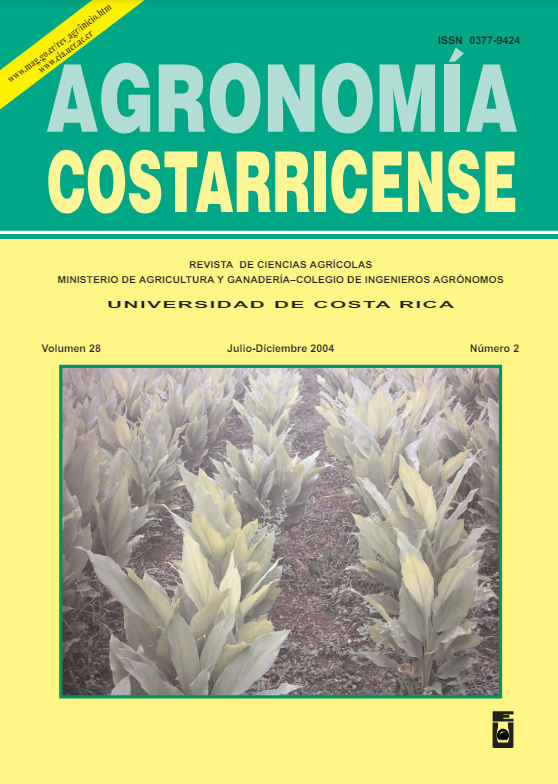Abstract
The effect of Gliocladium roseum on the control of Botrytis cinerea was studied in the area of Poasito of Alajuela, where the action of the antagonist was evaluated individually and jointly with the fungicides applied by the farm to control B. cinerea; the results were compared with those attained with commercial management. A randomized complete block design with 4 repetitions was used. Weekly applications of the antagonist (at a concentration ≥ 107 conidia ml-1) were made during nearly 4 months (July-October, 2000). The incidence of gray mold under field and postharvest conditions, and the effect of fungicides applied on the conidia of the biocontroller in vitro, were evaluated. Better control of the disease in field conditions using the antagonist alone or jointly with fungicides was obtained, as compared to that obtained with commercial management. Under post-harvest conditions, the performance of the biocontroller was statistically equal to the fungicide control. These results show that fungicides applied do not affect the action of the antagonist considerably, which was confirmed with the in vitro test. The use of G. roseum not only controls B. cinerea, but also provides good control of other pathogens (Colletotrichum, Phytophthora, Rhizoctonia, Rhizopus, Alternaria, Fusarium, Verticillium and Penicillium), since the percentage of healthy fruits is higher when the action of the antagonist is integrated to the commercial management. However, these differences are not statistically significant. Thus it was concluded that G. roseum is a possible alternative of integrated pest management of gray mold in strawberry.
##plugins.facebook.comentarios##

This work is licensed under a Creative Commons Attribution-NonCommercial-NoDerivatives 4.0 International License.
Copyright (c) 2024 Agronomía Costarricense


